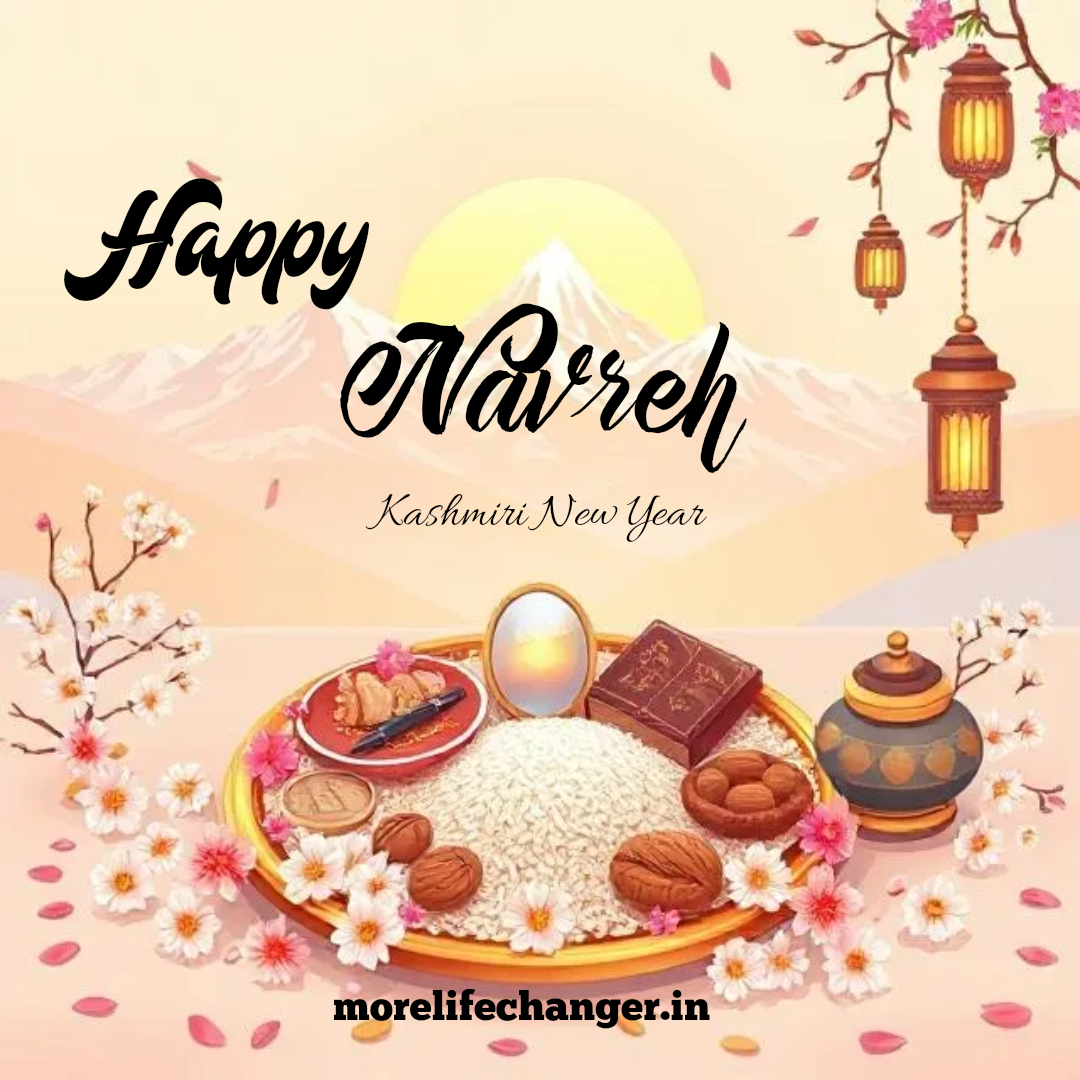Navreh, derived from the Sanskrit word Nav-Varsha (New Year), marks the beginning of the Kashmiri lunar calendar. It is primarily celebrated by Kashmiri Pandits and coincides with Chaitra Shukla Pratipada, the same day as Ugadi (Andhra Pradesh, Karnataka, Telangana) and Gudi Padwa (Maharashtra).
Significance of Navreh
Navreh is deeply rooted in Kashmiri Shaivism and Sanatan Dharma. It is considered an auspicious day for new beginnings, invoking blessings from Goddess Sharika, the presiding deity of Kashmir. The festival is also associated with King Lalitaditya Muktapida, a great ruler of ancient Kashmir, and is believed to mark the day when Kalhana, the famous historian, started writing Rajatarangini—the historical chronicle of Kashmir.
Also read : Lunar New Year
Rituals and Traditions
1. The Navreh Thaal (Sacred Platter)
On the night before Navreh, a special plate (thaal) is arranged with:
- New Panchang (Hindu Almanac) – Represents wisdom and knowledge.
- Grains of Rice/Wheat – Symbolizing prosperity and abundance.
- Soaked Walnuts – A unique Kashmiri tradition; the soaked walnuts are later distributed as prasad.
- Mirror – To reflect upon oneself and look forward to a bright future.
- Flowers – Representing beauty and positivity.
- Curd (Yogurt) – A sign of purity and good luck.
- Coin – Symbolizing wealth and prosperity.
- A Sacred Paper (Devi Slokas or Shiva Stotras) – Representing devotion and spirituality.
Early in the morning, before sunrise, family members wake up and the eldest member shows them the thaal first thing, ensuring that the new year starts with sacred and auspicious sights.
2. Worship & Pilgrimage
- Many devotees pray to Goddess Sharika Bhagwati, the presiding deity of Kashmir, whose temple is on Hari Parbat (Sharika Peeth) in Srinagar.
- Some also visit the shrine of Khir Bhawani at Tulmulla.
- Prayers to Lord Shiva, Vishnu, and other deities are also performed at home.
3. Special Dishes & Feast
Food plays a major role in Navreh celebrations. Traditional Kashmiri dishes prepared for the occasion include:
Modur Pulao – A saffron-infused sweet rice dish with dry fruits.
Dum Aloo – Kashmiri-style potato curry.
Nadru Yakhni – Lotus stem cooked in a yogurt-based gravy.
Rogan Josh or Yakhni – Mutton dishes for non-vegetarians.
Haak Saag – Kashmiri spinach preparation.
Soaked Walnuts – Consumed as a sacred offering.
4. Cultural & Social Gatherings
- Families and relatives visit each other to exchange Navreh greetings.
- Cultural programs, poetry recitations, and storytelling sessions on Kashmiri heritage are held.
- Some Kashmiri Pandit organizations conduct community feasts and celebrations.
Navreh & Kashmiri Calendar
Navreh marks the beginning of the Saptarshi Era (Saptrishi Samvat), which is unique to Kashmir. This era is said to have begun around 3076 BCE and continues to be followed by Kashmiri Pandits.
Navreh is more than just a New Year; it represents the resilience and cultural richness of the Kashmiri Pandit community. Despite displacement, the traditions of Navreh are kept alive, connecting generations to their ancestral roots.
Navreh in Exile
With the migration of Kashmiri Pandits from the Valley in 1990, the celebration of Navreh has spread beyond Kashmir, particularly in Jammu, Delhi, and other parts of India and the world. Despite displacement, the traditions remain alive, and many Pandit families continue to follow the rituals with deep devotion.
Please join discussion on Facebook about world facts and its secret.

